First, the proportion of imports from South Korea has reached a record high. In October 2016, imports from South Korea increased to 5,112 tons, a substantial increase of 47.9% from the previous month, and the proportion of total imports reached an unprecedented 58.9%, re-leading to the largest source of imports. The sharp drop in imports in September was mainly due to the extremely low market demand in the whole market, which led to a simultaneous decline in domestic and international demand. In October, when downstream demand recovered slightly, imports from South Korea resumed the highest import volume in the first 10 months. Accumulated imports of 545,81 tons, accounting for 48.6% of the total total imports, still ranked first in the import volume.
Second, imports from Germany plummeted. In October, the import of polysilicon from Germany was 2,328 tons, accounting for 26.8% of the total imports, a decrease of 37.0% from the previous month. Imports from Germany fell sharply in October after reaching the top of imports in September, mainly because imports from Germany were farther than other regions, and customs statistics would be delayed by about a month, so imports from Germany in October were imported. Customs data actually refers to imports from Germany in September, and September is the period of extremely low demand, so it can be understood from the sudden drop in imports from Germany.
Third, imports from the United States under the “freehold warehousing†accounted for absolute dominance. In October, the amount of imported polysilicon in the United States was 289 tons, an increase of 14.2% from the previous month, of which imports accounted for 83.3% of the processing trade, and 100% of the processing trade imports entered through the “freehold warehousingâ€. From January to October, the total import volume from the United States was 3,488 tons, and the proportion of imports by processing trade was 90.3%, of which 93.8% was entered through the “freehold warehousing†approach.
Fourth, the average monthly import price hit a record low. The average monthly import price in October fell to 13.63 US dollars / kg, down 16.0% from the previous month, a year-on-year decline of 21.5%. Mainly from the United States and South Korea, the monthly average price reached a record low, of which the average monthly price in the United States fell to 10.02 US dollars / kg, a significant drop of 74.5%, down 56.9%, the average monthly import price from South Korea fell to 12.13 US dollars / kg The chain fell by 17.8%, down 19.9% ​​year-on-year.
In October, the volume of polysilicon imports fell mainly due to the market downturn in September, and the import price was a record low. Since the customs import and delivery have a certain lag, the import price has not rebounded after the domestic market recovered in October.
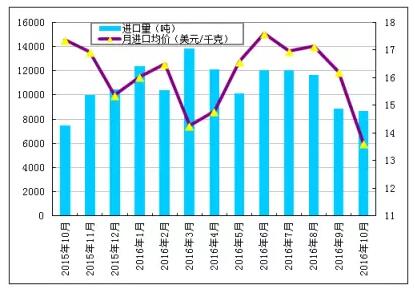
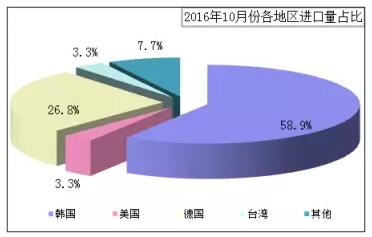
Korea:
In October 2016, the amount of polysilicon imported from South Korea was 5,112 tons, a substantial increase of 47.9% from the previous month; the unit price of imports fell to 12.13 US dollars / kg, a decrease of 17.8%.
In the first ten months of 2016, the cumulative amount of polysilicon imported from South Korea was 54,581 tons, an increase of 32.4% over the same period of last year; the cumulative average import price was US$14.80/kg, down 11.9% year-on-year.
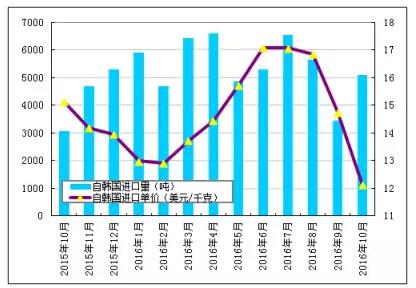
In October 2016, the amount of polysilicon imported from the United States was 289 tons, an increase of 14.2% from the previous month. In October, the unit price of imports fell sharply to US$10.02/kg, a decrease of 74.5% from the previous month.
In the first ten months of 2016, the cumulative amount of polysilicon imported from the United States was 3,488 tons, a decrease of 72.6% year-on-year; the cumulative average import price was 35.69 US dollars/kg, up 103.2% year-on-year.
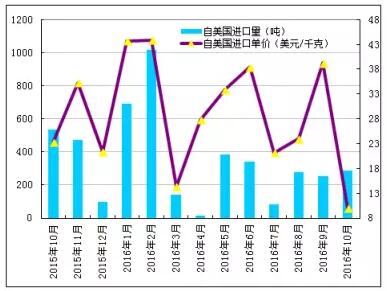
In October 2016, the amount of polysilicon imported from Germany was 2,328 tons, a decrease of 37.0% from the previous month. In October, the unit price of imports rose to US$17.22/kg, a month-on-month increase of 5.8%.
In the first ten months of 2016, the cumulative amount of polysilicon imported from Germany was 29,370 tons, an increase of 10.3% year-on-year; the cumulative average import price was US$16.04/kg, down 21.6% year-on-year.
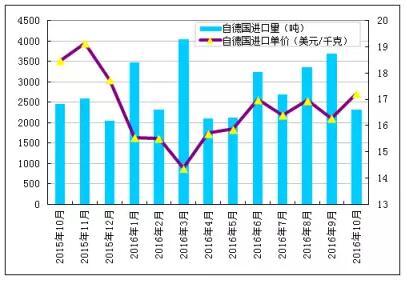
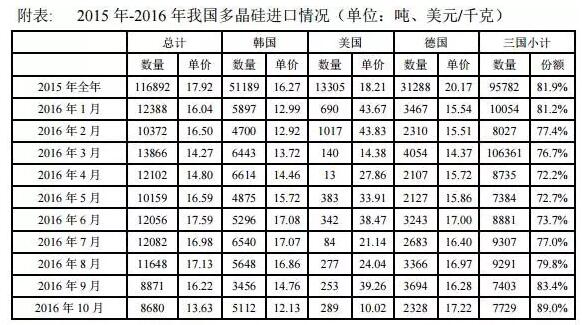
Finishing Nails
Finishing nails act as the fasteners while offering a decorative effect. It also called lost-head nails, brad nails, headless nails, furniture nails and bullet nails. The upholstery finishing nails are made of tough & slender steel wires. The finished product has a small globular head that is only slightly larger than the shank. When driven into the wood, it is slightly beneath the surface, then covered with putty or other paint you like. Therefore, finishing nails are visually unappealing in interior decorations, furniture making, and other finish works where modification surface is needed.
Finishing Nails,Bright Finishing Nails,Galvanized Finishing Nails,Zinc Plating-Coloring Finishing Nails
HENGSHUI YUZHENG IMPORT AND EXPORT CO., LTD. , https://www.yuzhengnails.com
